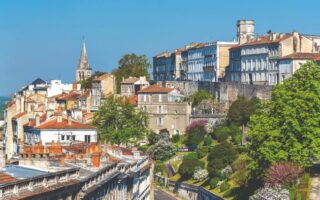Get to Know France’s West Coast: Your Ultimate Guide to Brittany
Feature
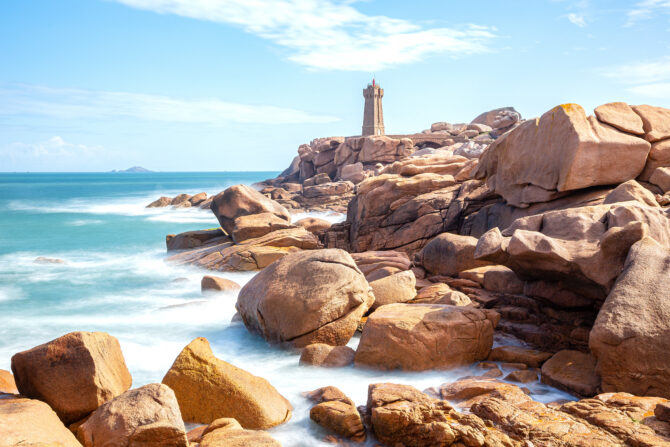

From Brittany to the Vendée to the southwest surf spots – this three-part series shines the spotlight on France’s west coast, starting with a comprehensive guide to Brittany.
Love the sea? Ever thought of holidays or living on France’s west coast? Often overlooked in favour of its more famous Mediterranean coastline, as you’ll discover, the west coast possesses many rare gems and one or two world records. This three-part series, with added links for further reading, introduces you to some of its best features.
Brittany Geography
Tucked in the north-west of France, Brittany forms a peninsula. The region comprises four administrative departments: Finistère, Morbihan, Côtes d’Armor and Ille et Vilaine.
It has over 2,735 kilometres (1,700 miles) of spectacular coastline and 800 islands lapped by the precarious English Channel, the Celtic Sea, and the Atlantic Ocean to the south. Did you know that this area has the fastest tides in Europe? The water is apt to travel fast here.
Brittany belongs to the ancient uplands of the Armorican Massif. A geologic range covering a large area in the north-west of France, it features gorges, estuaries, marshlands, forest and verdant countryside stippled with lakes. The major rivers here include the Vilaine, the Leita, and the Rance.
The Aulne Basin separates the Arrée Mountains with Roc’h Ruz 385 metres (1,263 feet), its highest peak in the north, and the Black Mountains with Roc’h Toullaeron, its highest peak 318 metres (1,043 feet)) in the south. Both ranges run east-west.
Despite declines in stocks, the fishing industry still thrives in Breton waters. Inland, the once densely forested areas have altered with a focus on farming, including rearing pigs, poultry, and calves. Cereals such as buckwheat and fodder crops are also grown.
Fruit lovers are in luck here. Strawberries are grown in Plougastel, though you’ll find them throughout the region. More than six hundred apple varieties are cultivated, many of which fuel the thriving cider production industry.
Brittany Weather & Climate
Brittany has a fresh, invigorating climate. This region witnesses spectacular storms with monster tides and raging seas. Protecting vessels from the fissured shoreline led to the building of lighthouses. It’s here where you’ll find the greatest concentration in the world. For good reason, mariners are highly respectful of their home surf. But the weather isn’t always stormy.
The region has an oceanic climate with drier, often windy summers. Daily temperatures generally range from 5.6 °C (42.08 °F) in January to 22 °C (72 °F) in August. Its capital, Rennes, enjoys an average of 1,851 hours of sunshine annually. Winters tend to be rainy and mild. Frost and snow are infrequent, though beware the easterly wind, which is decidedly chilly.
Within the region, conditions often vary. The north coast and Finistère, the extreme westerly department, generally have the coolest, wettest weather. The region’s interior enjoys gentler, drier conditions. The southern department of Morbihan benefits from a sunnier microclimate, with the area around Vannes thought to enjoy the sunniest weather.
Making accurate comparisons is always tricky, though many consider that Brittany is warmer and drier than England’s south coast, especially during the summer.
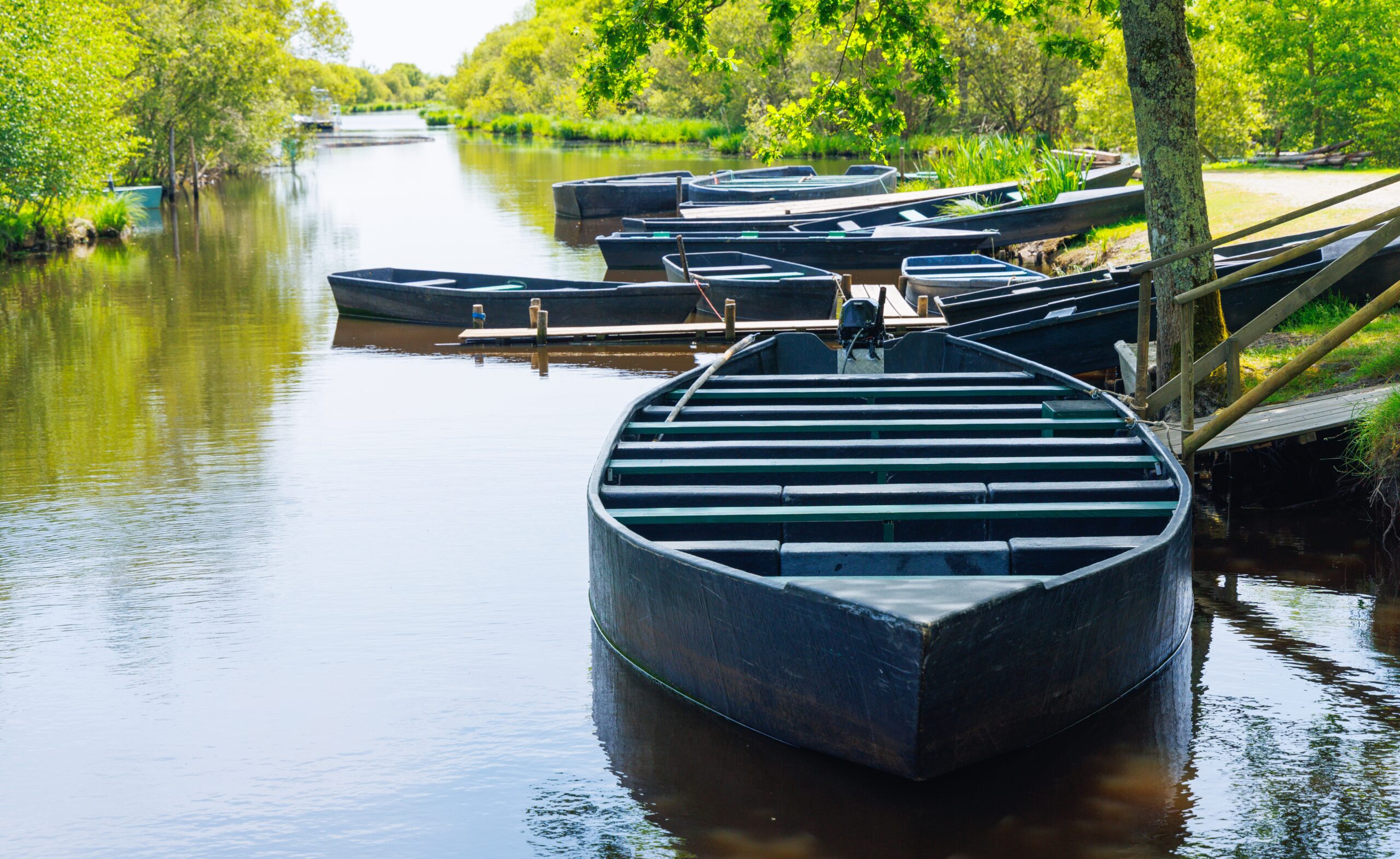
Brittany Nature & Outdoors
Brittany is bliss for nature lovers. The region benefits from a mix of moors and marshland, coastal rivers such as the Léguer and Scorff, abundant with trout and salmon, forests and that jagged coastline dotted with islands enabling a profusion of diverse wildlife to flourish.
Coast
The particular topography makes the Breton coast a popular area for ornithologists. Its lofty headland viewing points are ideal for observing a mix of migratory and sedentary birds. Organised trips take visitors to view the flora and fauna on several islands, many of which have protected status. On the Sept-Îles archipelago, in the Côtes-d’Armor, you’ll see the elegant Northern Tern on its only nesting ground in France. It shares its habitat with the rarely-seen comical-looking Atlantic puffin.
Pack your gum boots, buckets and spades if you enjoy shellfish hunting. With its rock-laced shores, investigating the multitude of rock pools and shallows dwellers is an endless pursuit. Not so far offshore, depending on the time of year, you might also spot some marine mammals. This is a playground for bottlenose and Risso’s dolphins, porpoises and sometimes long-finned pilot whales, sperm whales and killer whales. And there’s another exceptional species here.
The critically endangered basking shark is often seen in the spring or summer grazing for plankton near the coasts of Morbihan, also near the Glénan isles and the Iroise Sea. The more familiar grey seals are particularly prevalent, including in the famed Parc Marin d’Iroise, France’s first marine park. The largest colony in France, grey seal numbers peak in winter and can be seen all year round.
Natural Parks
Brittany fiercely protects its indigenous species and migratory visitors, particularly in its three natural parks: the Armorique Regional Natural Park, the Briere Regional Natural Park marshlands and the Parc Marin d’Iroise mentioned above.
Armorique Regional Natural Park
The park lies in a 125,000 hectare (308,882 acres) protected area. It extends from the Atlantic Ocean to hilly inland countryside, encompassing several important features.
- The Park is home to France’s largest collection of Atlantic moors and the largest complex of peat bogs in Brittany. Spread over 10,000 hectares (24,710 acres), these natural spaces are home to emblematic species and provide services to support agricultural activity and the community.
- The Park plays a crucial role in agricultural activity and the preservation of the environment by demarcating plots, protecting crops and animals and limiting runoff.
- The Park nurtures three large forests: Huelgoat, Cranou and Landévennec, which are rich in natural diversity.
- The Crozon peninsula to the Monts d’Arrée forms part of the Armorican Massif, dating back more than 500 million years. The geological site has been recognised by the UNESCO Global Geopark This area is managed by the Menez Meur estate, which offers year-round activities for visitors to learn about local wildlife breeds and the area’s natural and cultural heritage.
- The Saint-Michel and Drennec lakes are the two largest water reservoirs in Finistère. Their 1700 km of waterways flow partly into Brest harbour. This spectacular bay faces the Iroise Sea and several islands and is home to fragile marine habitats such as eelgrass beds, maërl, boulder fields and mudflats. The Bay of Brest is one of the most studied coastal ecosystems in the world.
Briere Regional Natural Park
The Brière Park lies north of the Loire estuary. With over 4,937 hectares (12,200 acres) of peaty flat land and canals, it is one of the largest wetlands in France, containing an extensive variety of natural ecosystems. It is home to nine hundred different plant species and thousands of birds, including bluethroats, herons, egrets and ducks.
Behind the dykes formed by alluvial deposits of the Loire, a vast 40,000 hectare (98,842 acres) peat bog has developed, with seven islands in its centre. In this landscape, nicknamed the ‘black country’ due to the peaty ground, specific fauna and flora have flourished.
The Paimpont Forest – the mythical Forest of Brocéliande
Brocéliande is a 7,000 hectare (17,297 acre) forest. Classified as a natural area of interest for ecology, flora and fauna, it is an exceptional site for conserving large mammals, notably boar and deer, along with many other plant and animal species. And there’s more.
Spells, wizards, legends and ghosts, the famed Brocéliande Forest is the legendary birthplace of King Arthur. These woods contain extraordinary natural phenomena and ancient secrets that have inflamed imaginations for centuries. Myths and magic abound in these enchanting woods.
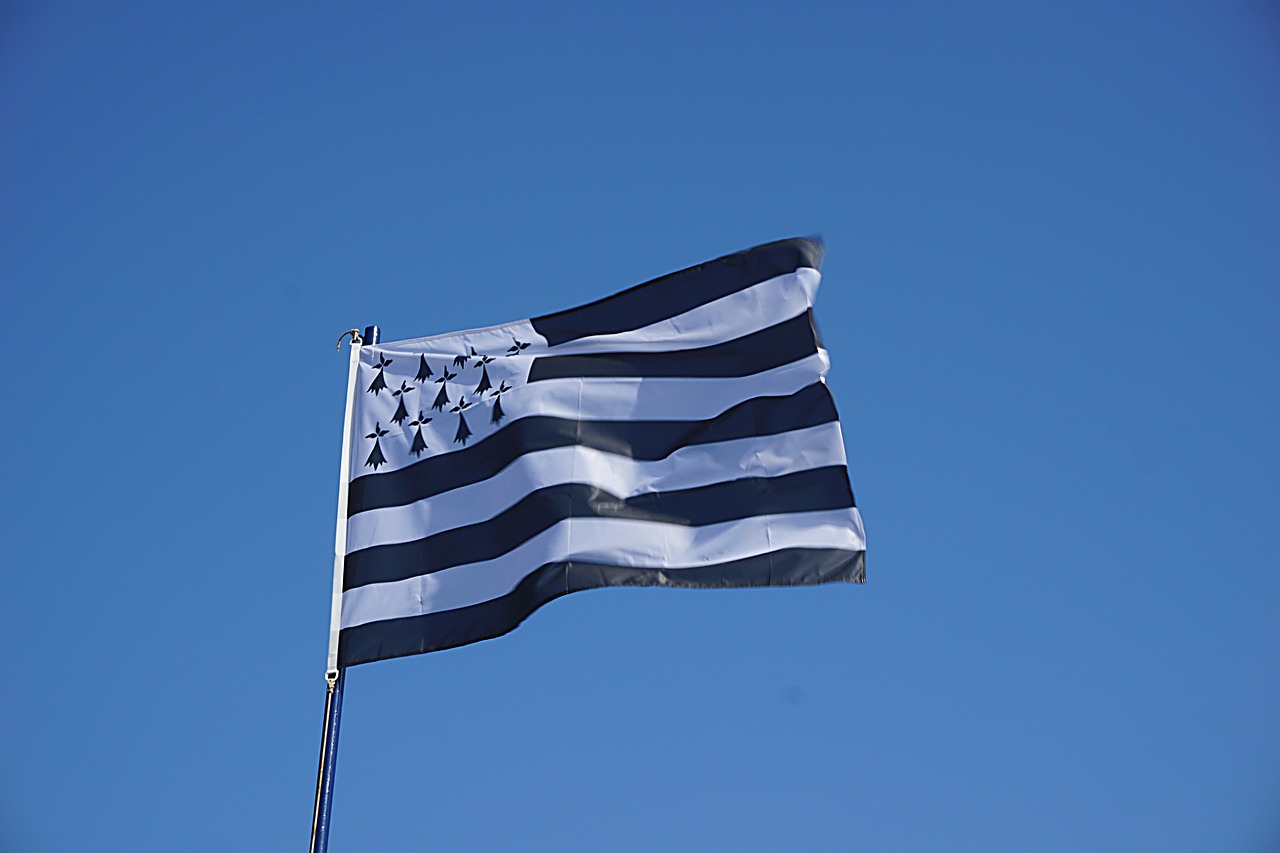
Brittany History & Culture
Just like its famous forest, Breton culture embraces its fables and mysteries. Everywhere you go, you’ll see evidence of past events, the celebration of saints, ages-old chapels and towns, medieval chateaux and that Celtic mystic. Brittany has a unique identity which began a long, long time ago.
Neolithic Legacy
The Neolithic period left a legacy of menhirs and dolmens. Brittany is home to the world’s greatest number of megalithic stones in one site. Seven thousand years old, the mighty Carnac Stones site is an outstanding example of European prehistory. More than 3,000 perfectly aligned prehistoric standing stones were carved and erected during the Neolithic period. It is an extraordinary place to visit.
The Vallée des Saints in Carnoët is a modern-day monumental project, though this one has a Celtic twist. In an ongoing project, sculptors are creating immense four-metre-high granite statues of Breton saints. The aim is to craft 1,000 statues spread across a hilltop. Eventually, it will become a permanent stage for the arts and historical re-enactments. A Celtic monastery will also be constructed.
Celtic Ancestry
After the Roman Empire fell, the Angles and Saxons invaded Britain, forcing the British to retreat to their western strongholds. Many migrated south across the sea to the north-west part of Gaul, then known as Armorica. Part of the area, which encompassed Normandy, eventually became the land of the Britons and was renamed Brittany.
As you’ll read, Brittany is fiercely proud of its Celtic background and demonstrated in many ways. Whilst French is spoken throughout the region, a second language called ‘Breton’ is also used. Originating from the Celtic language, there are between 250,000 and 500,000 speakers. Many areas display bilingual (Breton and French) road signs and fly the region’s distinctive black and white flag. Its stripes represent the traditional dioceses of Brittany and eleven ermine, symbolising purity, innocence, and courage, and recall the arms of the Duchy of Brittany since the 14th century.
The adoption of the Triskel, consisting of three branches extending from a central point, underscores Brittany’s deep connection to its Celtic roots. This ancient symbol traces its origins back to the Bronze Age when it emerged as a prominent motif in Celtic art.
Religious Heritage
Religion is strongly linked to Brittany’s heritage. Chapels, statues and monuments dedicated to the founding saints are plentiful here. You’ll often see ancient symbols such as a granite cross positioned on waysides. Many stone crosses were erected as early as the early 7th century.
Resonating with the Celtic spirit, calvaries, of which seven exist, are single works unique to Brittany. Sculpted from massive granite blocks between the 1450s and 1610, figures depict scenes from the life of Christ.
Arts
Brittany inspires artists. Film-makers, writers, painters, musicians and craftspeople come here. Why? It could be the landscapes, the architecture, the lifestyle, the extraordinary light, it’s hard to know. It was in Brittany where Paul Gaugin headed the founding group of the Pont-Aven School in 1886. The woodland trail he and many artists took is still popular today.
Breton music thrives, too, with a lively Celtic mix of melodies and ballads balanced by poetic lyrics. Dances such as the gavotte, the an-dro, the hanter-dro, and other artistic traditions are celebrated through festival occasions, often accompanied by Celtic traditional musical instruments.
Breton bagpipes, called biniou or cornemuse, may cause the Irish, Scots and Galicians in north-west Spain to smile in recognition. It’s the same with the Welsh and the Breton use of harps. Several exchanges and festivals with Celtic counterparts, especially Ireland, Wales, and Scotland, take place here, and they are all designed to nurture and promote Celtic kinship and enrichment.
Expressions of Breton culture are equally visible through their crafts. From pottery in Quimper to the famous embroidery of Pont-l’Abbé and exquisite lace-making in Plougastel-Daoulas, Breton craft artisans are renowned for their know-how.
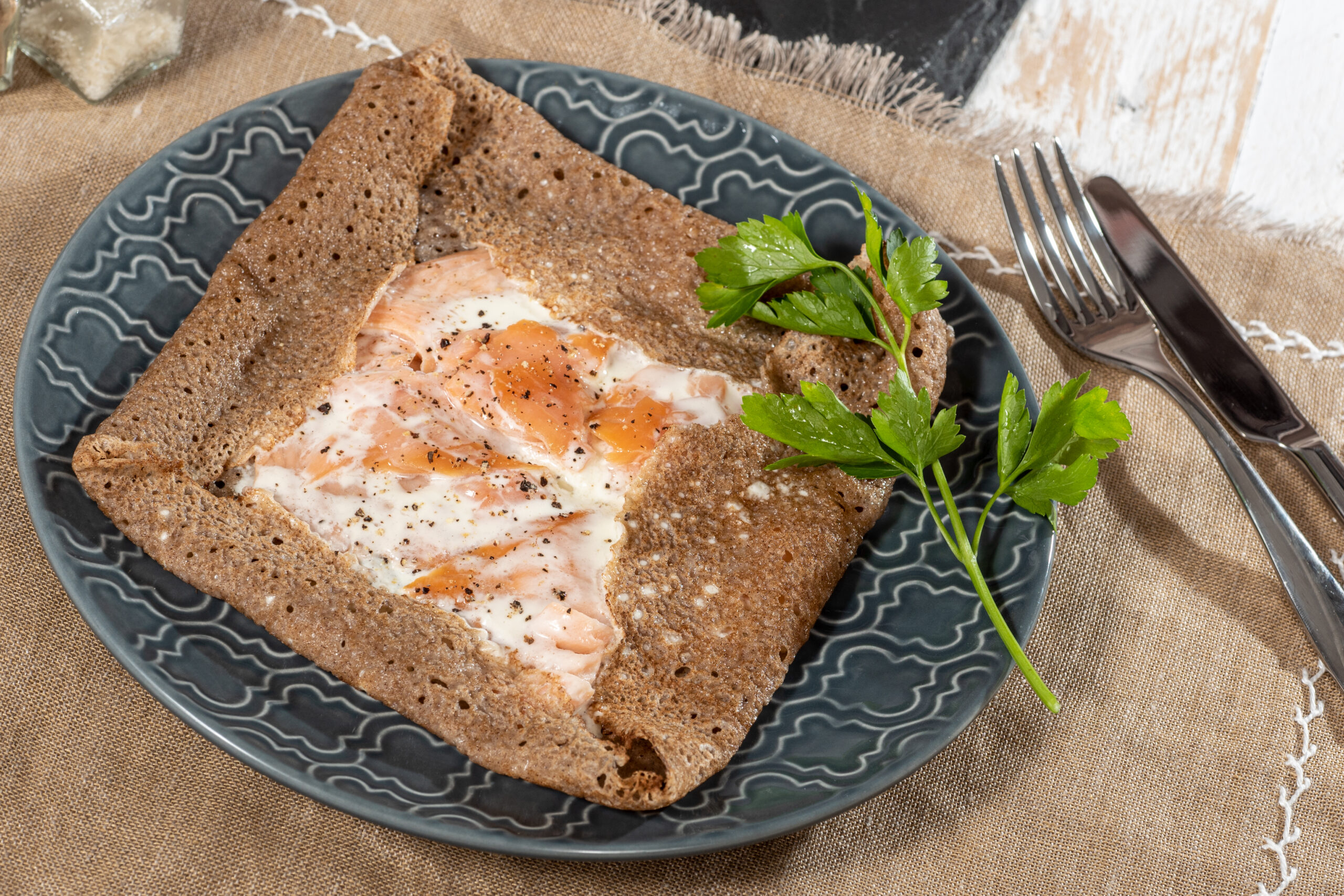
Brittany Regional Gastronomy
There is so much to love about Breton food. With such a rich mosaic of flavours, it’s hardly surprising.
Seafood
Brittany is where you can relax on a tiny port quay, watching fishing boats return from the sea and sometimes even buy from their catch after they dock. From deep water to coastal hauls including that superfood, seaweed, the foodie options are endless. You can even celebrate seafood specialities at carnival events.
The pretty town of Port Scorff has a strong connection with salmon fishing. Every July, it celebrates its cherished fish with three days of music and entertainment, cooking workshops, and special meals, with salmon as the star turn. Paimpol in the Côtes d’Armor hosts a similar festival in September with their delicious oysters.
If you decide to dine on the mouth-watering Breton shellfish, beware. You’d better be hungry if you order a seafood platter. Those portions are huge!
Pastries and Cakes
Visits to the region are not complete without savouring the delights of a local pancake. Using the buckwheat, grown in abundance here, this quintessential Breton treat, which comes in two forms, is delicious.
Crêpes are sweet, while galettes are savoury. They are so popular that each July, the Morbihan village of Gourin celebrates the dish with two days of dancing, Breton pipe bands and concerts, and an event highlight: the pancake-making competition to see who can make the biggest crêpes.
Brittany is famous for producing and using butter in cooking. And it isn’t as unhealthy as it sounds. Breton butter includes salt from Guérande, which has a high magnesium and trace element content. It’s this butter that stars in the famous Douarnenez Kouign-Amann, which means ‘butter cake’. The round cake is made from buttery dough coated in sugar, and it’s seriously yummy. Equally popular are the tubby butter biscuits called Palets Bretons. Quintessentially Breton. The perfect partner for your coffee.
Savouries
Among many other celebrated foodstuffs, Brittany is known for its Andouille de Guémené, a sausage made from pork meat, chitterlings, pepper, onions, wine and seasonings. It can be served either hot or cold. It’s an acquired taste and much enjoyed by lovers of authentic French charcuterie.
Drinks
The apple is the region’s emblematic fruit. Used in cooking, eating on the go and savoured by fresh juice lovers, Brittany also produces a unique farm cider. Utilising an ancient distilling process, the cider is rich in antioxidants, vitamins, trace elements and mineral salts. It has a slightly sharp but fruity taste and a distinctive colour.
Lambig is a cider brandy with a high alcohol content and is produced by distillation in a retort. Also known as Fine de Bretagne, it is the Breton equivalent of the Calvados produced in Normandy.
Chouchen is one of the world’s oldest drinks and links to Brittany’s Celtic heritage. The gold-coloured drink is similar to mead and is produced from the fermentation of honey in apple juice.
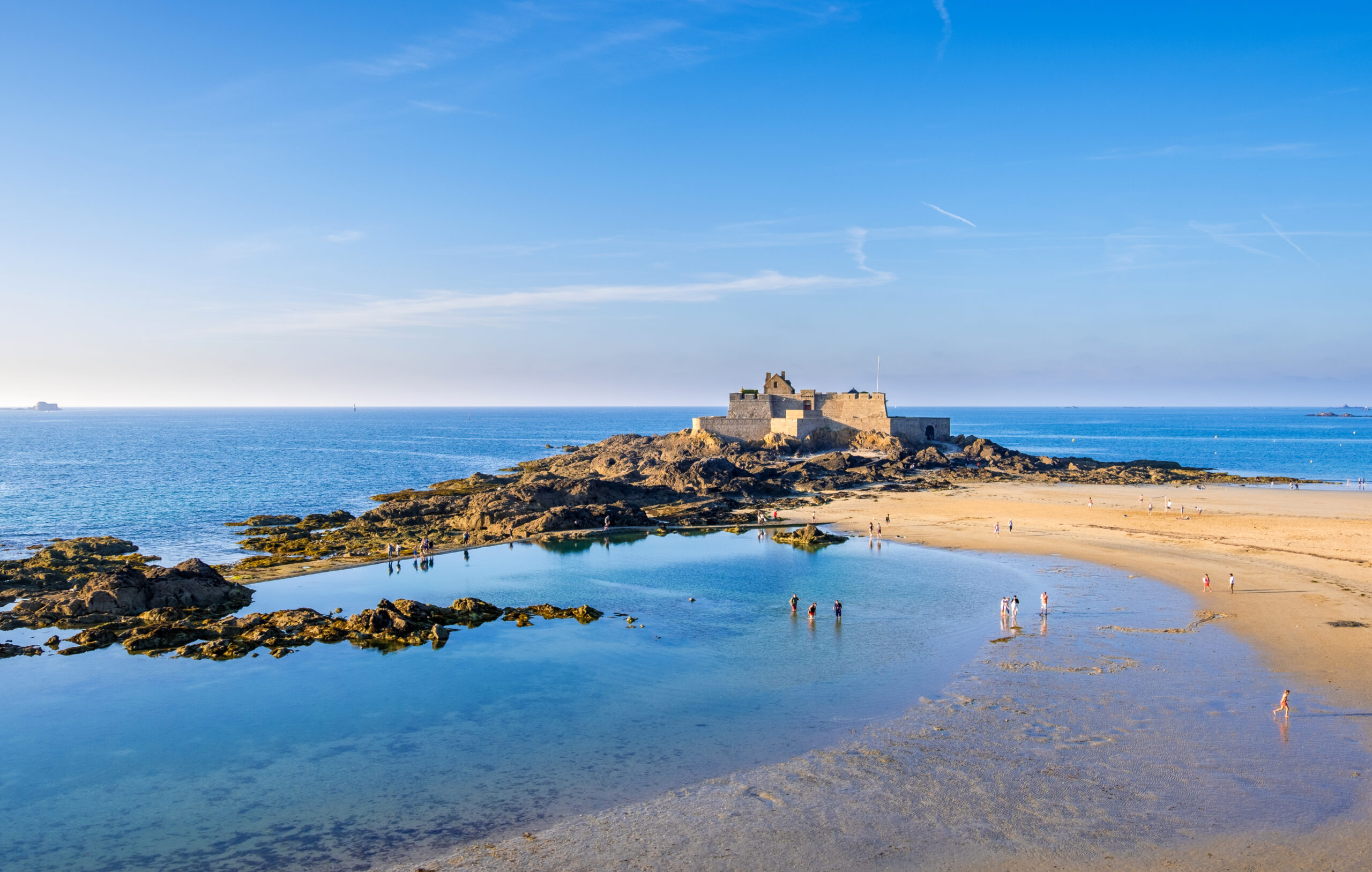
Brittany Things To Do
Brittany is the place to unwind, recharge batteries and absorb the unique environment. But, if adventuring on your own, with friends or family is your thing, the region also has you covered.
Seaside Fun
Brittany’s coastline provides a world-class playground for sea lovers. From exploring rocky inlets, climbing, spotting shellfish and marine animals, sunbathing or enjoying its extraordinary scenery by bike, horseback or on foot, the options are limitless.
Water sports are big here. Swimming, diving, surfing, paddle boarding, jet skiing, or just having a gentle potter through the wavelets, the shoreline with its sheltered coves and open sea is amazingly versatile. Sailing enthusiasts love Brittany, too, and offers many locations for learning seamanship. Brest Bretagne Nautisme is the biggest sailing school in France. It caters for all abilities and has become a hub for water-related activities.
Biking and Hiking
Follow in the footsteps of saints, explore the mysteries of the forested interior, enjoy coastal highlights such as lighthouses and the pink granite coast using the GR®, PR®, and GRP® established routes. Brittany has 10,000 km of marked hiking trails with differing distances, including eight Grande Randonnée (long-distance) hikes.
The GR®34 long-distance footpath, also called the Sentier des Douaniers (Custom Officer’s path), is an extraordinary trail. It snakes along the Breton coastline for over 2,000 km, from Mont-Saint-Michel to the Saint-Nazaire bridge.
If the thought of pathways combining nature with ancient myths appeals, head over to the magnificent Paimpont – Brocéliande Forest. Known for its green tourism, Brocéliande is a favourite for activities including: forestry, fishing, hunting, hiking and cycling. But also its legends.
This is a place where your imagination can run riot. Many wonders are associated with the renowned forest perpetuated by tales surrounding King Arthur, the fairy Vivien, Merlin the Wizard, Lancelot and forest spirits known as korrigans or poulpicans.
Since the Middle Ages, several fountains in the forest have gained reputations for their lifesaving, enchanted or evil powers. Their notoriety goes well beyond the borders of Armorica and has inspired great authors. It is said that many Arthurian feats took place in the realm of the mythical forest of Brocéliande.
Animal Magic
The Armorique Regional Natural Park’s mission to conserve the region’s nature and cultural heritage encourages learning and fun. Its Menez Meur estate has trails introducing visitors to Brittany’s plants and animals. A mix of indigenous domestic breeds and wildlife can be seen here, including deer, boar and wolves. Other routes provide tours of the surrounding terrain.
Rock Love
Geology enthusiasts adore the Armorique Geopark. Did you know that 320 million years ago, Armorica was as high as the Alps? There’s so much to learn in the Geopark.
From the vertical cliffs of the Crozon peninsula to the crests of the Monts d’Arrée, passing through the harbour of Brest, the Aulne valley and the Huelgoat, the park which forms an area of outstanding geological heritage has three key aims:
- Conservation
- Education
- Sustainable Tourism
Museums and Art
Culture vultures are spoilt rotten in Brittany. There’s plenty on offer with museum visits and walks of cultural interest, or simply exploring towns steeped in history. This sample gives you an idea of the region’s diversity.
- Museum of Brittany and the FRAC contemporary art museum in Rennes
- Pont-Aven museum
- Museum of Fine Arts in Quimper
- Fishing museum in Concarneau
- National Maritime Museum in Brest
- Naia museum in Rochefort-en-terre
- Manor of the Automobile in Lohéac
- Musée de Carnac
- Museum of Resistance in Saint-Marcel
- Cité des Télécoms moving world of telecoms and digital technology in Pleumeur-Bodou.
Chapels and Chateaux
Over 4,000 chateaux, manors and stately homes furnish the region, constructed from the earliest epochs. Styles and architecture differ, as do their original purposes. Some, like the Château du Guildo, now a ruin, was once used to control the crossing of the Arguenon. The gracious medieval castle of Combourg, was the birthplace of François-René de Chateaubriand, the writer. Contrast this with the Château de Pontivy, one of the last fortified castles built in Brittany.
Brittany’s religious heritage is equally profound. You can explore it via the Tro Breiz, a circular 1500 km (approximate distance of the complete route) pilgrimage to the Seven Holy Founders of Brittany in their districts. The journey combines spirituality, culture, and opportunities to explore Roman Catholic abbeys, chapels, churches, and cathedrals.
The revered site of Mont Saint Michel, in neighbouring Normandy, needs little explanation. Its history begins in 708 after the Archangel Michael appeared to Bishop Aubert three times in a dream. Saint Michael asked him to build a sanctuary in his honour on Mont Tombe. Over the centuries, an abbey, convent buildings, and a village were added. Mont St Michel is now a renowned spiritual and intellectual home and a place of pilgrimage.
Cities and Villages
Small is beautiful here. Brittany is filled with scenic villages. Treading centuries-old cobble streets, admiring charming buildings and mooching around seaside ports is a great way to absorb the region’s character.
And don’t forget the vibrant cities, many of which began life centuries ago. Stars include, Rennes, St Malo, Quimper and Brest, which have their proud brand of individualism, and bustle with industry and charismatic verve.
Festival Fun
Bretons know how to party, none more so than at their InterCeltic Festival of Lorient. The annual event celebrates music, dance, theatre, and food from around the Celtic world. It is now one of France’s great summer music festivals, attracting performers from European Celtic regions and over 700,000 visitors. And there’s more.
The carnival spirit is felt throughout the region. Gatherings celebrate gastronomy, maritime events, medieval life, sporting fun, the arts, and more. Truly, there’s something for everyone to enjoy.
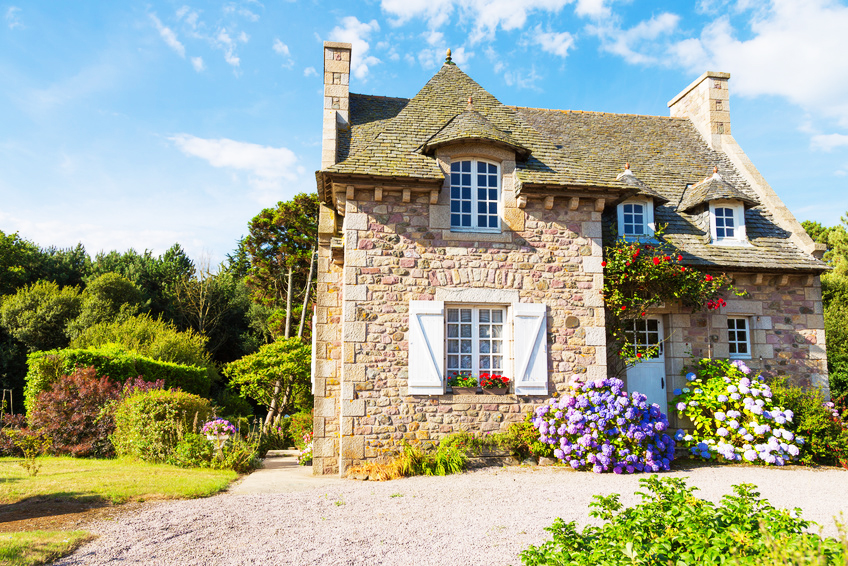
Why Buy in Brittany?
Why buy or rent in Brittany? The easy answer is: why not?
Many people come here to retire, others settle with their families, and it’s a hugely popular destination for holidaymakers and fun seekers.
Travel
Thanks to excellent main road networks, ports, its regional airports and high-speed trains, the whole region is easily accessible.
From London, the Eurostar journey to the Gare du Nord in Paris is 2 hours 20 minutes. Hop on the TGV Atlantique high-speed train, and it only takes 1 hour and 30 minutes to get to Rennes. A similar direct rail service exists from Paris’ Charles de Gaulle airport.
Several airlines operate flights to Brittany’s airports from the UK and Ireland, many of which are low-cost. Flights from Paris to Brittany take a little over one hour.
If you drive to Paris from Rennes, the most direct route is via the A11, a journey of around 3hrs and 34mins. If you’re driving to Brittany from the UK, the journey from the Eurotunnel Calais Terminal to Rennes takes around 5hrs 25 minutes.
The most popular car and foot ferry routes from the UK are to Roscoff and St Malo.
Employment
Brittany offers diverse employment opportunities across multiple industries and enjoys a higher employment rate in France. The focus is tourism, fishing, agriculture, digital technology and manufacturing. And that creative soul of Brittany has inspired an industry of its own. Some of the biggest names in the economy, such as Yves Rocher, have their origins here and are now important employers.
Rennes, the region’s capital renowned for its picturesque half-timbered houses and rich cultural heritage, is one of the most popular cities in France. It is regularly ranked among the most dynamic and attractive places for employment and business. Why not visit for the weekend? You’ll understand why.
Shopping
From designer boutiques to major stores, Brittany caters for all retail tastes. And true to French traditions, a strong market culture exists, one with a unique Breton twist. Shopping here is fun, especially if you love uber-fresh food. Here’s a link to some major markets, but don’t overlook the smaller equivalents. Those are where locals shop for the best prices and quality.
Where to Live, or Rent, or Holiday
With so much choice, the decisions are yours to make. It’s just a question of deciding on your priorities. Exploring several areas first to get a feel for the environment and ambience before making a decision makes sense. The links below offer excellent additional advice on the region. Once you dip your toes in the Breton waters, like so many others, it’s likely that you, too, will become beguiled by its magic.
More information:
https://www.welcometofrance.com/en/region/bretagne
https://www.brittanytourism.com/
https://www.regions-of-france.com/regions/brittany
[The author’s information in this article is given in good faith based on their experience and the supplementary website material gathered during the research process.]
Share to: Facebook Twitter LinkedIn Email
By Beth Haslam
Leave a reply
Your email address will not be published. Required fields are marked *



